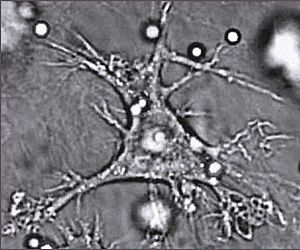Dendritic cell facts for kids
Dendritic cells are special white blood cells that are part of your body's amazing immune system. Think of them as tiny messengers! They help your body fight off bad guys like viruses and bacteria. They find these invaders, show them to other immune cells, and help start a big defense.
You can find dendritic cells in places that touch the outside world, like your skin, the lining of your nose, lungs, stomach, and intestines. They can also float around in your blood when they are not fully grown.
How Dendritic Cells Grow
Dendritic cells start as other white blood cells called monocytes. These monocytes travel around your body. Depending on what your body needs, monocytes can become dendritic cells or macrophages (another type of immune cell). All these cells come from special stem cells found in your bone marrow.
Young dendritic cells are always looking for invaders like viruses and bacteria. They have special "sensors" called pattern recognition receptors that help them spot trouble.
When they find an invader, they "eat" it! This process is called phagocytosis. They break down the invader's proteins into tiny pieces. Then, they show these pieces on their surface using special molecules called MHC molecules. After eating an invader, these cells travel to your lymph nodes. There, they become fully grown and ready to work. They then "switch on" signals that tell other important immune cells, like T cells and B cells, to get ready and fight the infection. This starts your body's powerful adaptive immune response.
Who Discovered Dendritic Cells?
Dendritic cells were first seen by a scientist named Paul Langerhans a long time ago, in the late 1800s. He called them Langerhans cells. But it wasn't until 1973 that Ralph Steinman and Zanvil Cohn gave them the name 'dendritic cells'.
Ralph Steinman later won the Albert Lasker Award in 2007 and the Nobel Prize in Physiology or Medicine in 2011. He received these awards for discovering how important dendritic cells are in helping your body's immune system fight off diseases.
Images for kids
See also
 In Spanish: Célula dendrítica para niños
In Spanish: Célula dendrítica para niños



